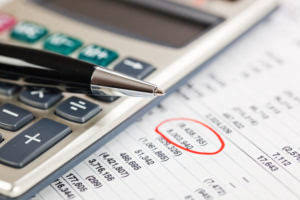Valuation Formula: 10 Most Used Calculations Quick Biz Valuation

If you’re a value investor, for instance, your strategy may revolve around finding the hidden gem companies, undervalued by the market as a whole. For example, if a company has 100 million shares outstanding priced at $10 each, its market capitalization value is $1 billion. Market cap is a fluid number, as share pricing can change day to day or even hour to hour.
Online Investments
- Multipliers can be 1, 2, 3, 4, or 5, depending on whether pretax earnings are utilized instead of sales.
- It is currently the perfect storm to value and sell your business in California.
- Seller financing is common for small business transactions, but you should determine early on in the process whether or not it’s available from the seller.
- It then discounts that value back to the present to find the current worth.
- Investment Decisions such as expansions and acquisitions are reflected in fixed assets investment rate and receivables, payables, inventory policies etc., are reflected in the net working capital investment rate.
- The valuation of early-stage companies can be challenging due to these factors.
- Kroll’s investment banking practice has extensive experience in M&A deal strategy and structuring, capital raising, transaction advisory services and financial sponsor coverage.
Thus, if the company was valued at $1,500,000, a 10 percent shareholder should receive $150,000 if the entire company were sold. The higher the rate, the lower the answer you’ll get as to the value of the company. The discount rate must reflect the appraiser’s best guess as to what the market rate will be for investments of a basic business valuation formula similar nature over the next five years. It should also factor in the buyer’s expected cost of capital (i.e., the interest rate on an acquisition loan) and the expected inflation rate. Choosing the correct cap rate is perhaps the most difficult task the appraiser must do — and perhaps the most mysterious to the rest of us.
- There are multiple ways to find the economic value of your business, with different calculations that can be used for different purposes.
- Harvard Business School Online’s Business Insights Blog provides the career insights you need to achieve your goals and gain confidence in your business skills.
- With an understanding of how to arrive at EBITDA (Earnings Before Interest, Taxes, Depreciation, and Amortization) for each company, it’s easier to explore ratios.
- If you’re planning on selling the business or looking for business loans for your small business, you’ll likely need to share these along with your financials.
- One way to think about these ratios is as part of the growing perpetuity equation.
- To ensure you’re on the right track, it may be helpful to use a calculator tool.
How to Value a Business (Formula and Examples Included)
- The capitalization of earnings method calculates the business value based on its cash flow, return on investment (ROI), and expected value.
- The next step is to find the company’s interest expense for the last 12 months, which is $100,000.
- He is a CFA charterholder as well as holding FINRA Series 7, 55 & 63 licenses.
- The resulting value indications from the approaches and methods applied would be evaluated and weighted, on a qualitative basis, as appropriate.
- Under the times revenue business valuation method, a stream of revenues generated over a certain period of time is applied to a multiplier which depends on the industry and economic environment.
Although the three business valuation methods above are sometimes considered the most common, they’re not the only options out there. In fact, whereas the ROI-based and market value-based methods are extremely subjective, some alternate approaches (as we’ll discuss) use more of your business’s financial data to get a better evaluation of its worth. Several business valuation methods are based primarily on the market price for similar businesses at a given point in time. Business brokers and mergers and acquisition specialists are more likely to favor thesemethods, at least as benchmarks, since they have access to data about recent sales and merger activity.
Multiples of Earnings Valuation Method
The most common valuation formulas are the capitalized earnings, the discounted cash flow, the relative valuation formula, the enterprise value to EBITDA multiple, and the asset-based. The benefit of discounted cash flow analysis is that it reflects a company’s ability to generate liquid assets. However, the challenge of this type of valuation is that its accuracy relies on the terminal value, which can vary depending on the assumptions you make about future growth and discount rates.
An accurate valuation will help you set a price for your business as well as play a significant role in the type of financing options a potential buyer may have. The adjusted net assets method (also known by other names) can also be applied to value a business under certain circumstances. These may include loans, mortgages, accounts payable, accrued expenses, and other financial obligations. When valuing a business, it’s essential to account for all liabilities to determine the company’s net worth or equity value.
Liabilities
It allows value to be calculated using a variety of scenarios and thus can offer a range of values based on tweaks in the assumptions used for forecasting. The discounted cash flow analysis is often considered a golden standard of business valuations. Businesses can use asset-based valuation to get an estimate of current value or what the business would be valued at after a liquidation event. Using the liquidation-based approach, the business’s value is measured by any net cash remaining after all assets are sold and liabilities are paid off. To understand the valuation of a company at an individual level, it helps to know more about the different business valuation methods that can be used. Even if the comps aren’t physically located nearby, an appraiser may find similar sized businesses in the same industry and can then make adjustments based on the area.

Are Unauthorized Business Accounts Hurting Your Credit?

Finding the best method for your situation will provide you with the best measure of value. The outputs are the fields provided after calculations are complete, and display the potential value of the business. Select the industry to which the business you’re buying or selling belongs. This https://www.bookstime.com/ is an important step because the multiplier that the calculator uses to come up with the final valuation will vary based on the industry the business belongs to. But it is the SDE multiple, based on industry trends that will make a difference in the business valuation calculations.
Industry multiplier or SDE multiple
The value is based on the asset’s original cost less any depreciation, amortization, or impairment costs made against the asset. For public companies, valuation is referred to as market capitalization (which we’ll discuss below) — where the value of the company equals the total number of outstanding shares multiplied by the price of the shares. A business valuation assesses the economic value of part or all of a business. Business valuations are used in a number of circumstances, including to determine the sale value of a business, to establish partner ownership, for tax purposes or even in divorce proceedings.
